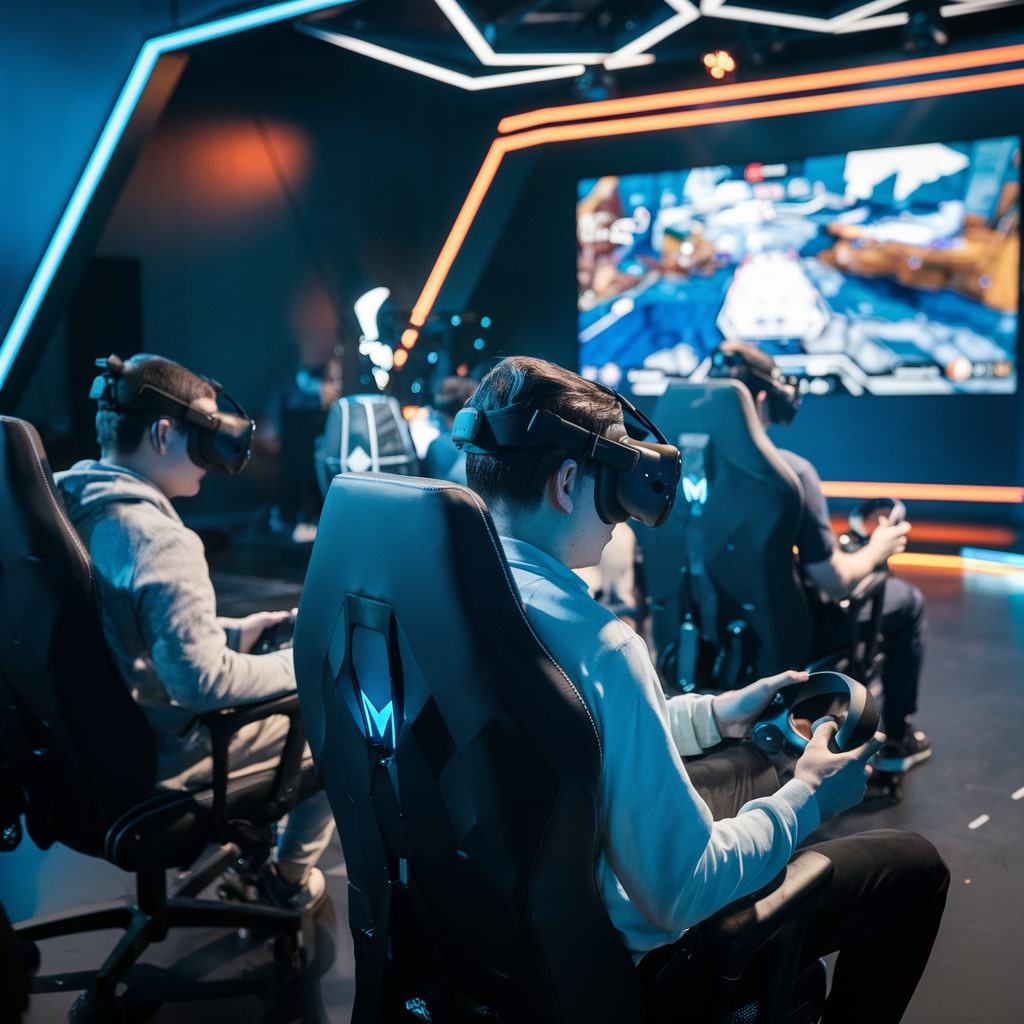Virtual Reality (VR) has transformed the gaming industry, and one of the most exciting developments is its growing presence in esports. Competitive gaming has traditionally been dominated by PC and console-based titles, but VR is introducing a new level of immersion and skill-based competition. As technology advances, VR esports is poised to become a major force in the gaming landscape.

1. The Evolution of VR Esports
The concept of esports in VR is not entirely new, but its adoption has accelerated with the improvement of hardware and game mechanics. Early VR tournaments featured games with limited movement, but today’s VR esports titles allow for full-body motion, realistic physics, and high levels of strategy.
Popular VR esports games like Echo VR, Onward, and Population: One have demonstrated that virtual reality can provide intense, fast-paced competition. With the rise of VR arenas and dedicated leagues, the potential for expansion is enormous.
2. Immersion and Skill-Based Play
One of the biggest advantages of VR esports is the level of immersion it offers. Unlike traditional gaming, where players rely on a screen and controller, VR requires full-body movement, spatial awareness, and physical endurance. This creates a more engaging experience where reaction time, coordination, and strategy are crucial for success.
In VR esports, players are physically involved in the game—ducking, running, aiming, and executing real-life tactics. This creates a deeper connection between the player and the virtual environment, making esports competitions even more intense.
3. Growth of VR Esports Leagues and Tournaments
The expansion of VR esports has led to the formation of professional leagues and tournaments. Organizations such as the VR Master League (VRML) and ESL VR are pioneering structured competitions with substantial prize pools. These leagues cater to a growing audience eager to see skilled players compete in a fully immersive environment.
Major gaming companies and investors are taking notice, with increased sponsorships, media coverage, and even VR-dedicated esports arenas being developed worldwide.
4. Challenges and Future Prospects
Despite its potential, VR esports still faces some challenges:
- Hardware Limitations – VR requires expensive equipment, and high-end headsets are still a barrier for many gamers.
- Accessibility – Unlike traditional esports, where players can participate from anywhere with an internet connection, VR esports often requires dedicated play areas with enough physical space.
- Game Optimization – Not all VR games are designed for competitive play, and developers need to refine mechanics for fairness and balance.
Looking ahead, advancements in wireless VR technology, cloud gaming, and AI-driven enhancements will likely remove many of these barriers. As the industry continues to grow, VR esports could become a mainstream category alongside traditional competitive gaming.
Conclusion
VR esports represents the next evolution of competitive gaming, bringing physicality, skill, and immersion to new heights. While challenges remain, the rapid development of VR technology and the increasing popularity of esports suggest that competitive VR gaming will continue to rise. As more players, developers, and organizations embrace the potential of VR, the future of esports may very well be virtual.
